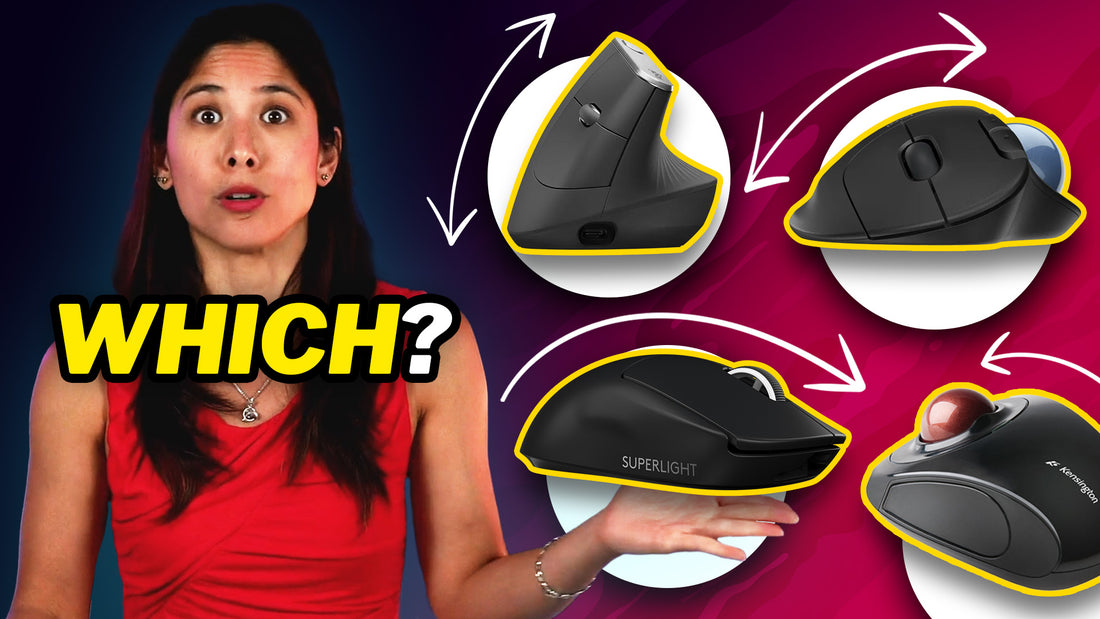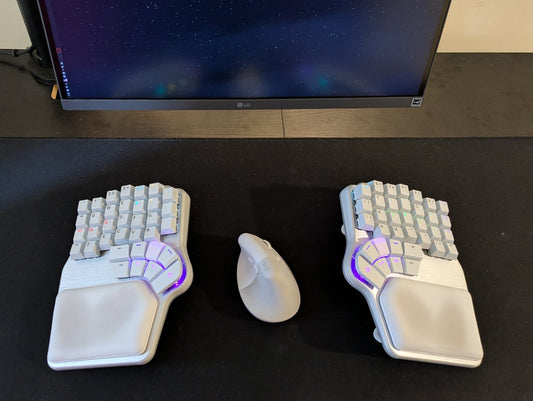The world of peripherals can be overwhelming, but don't worry; we're here to help you to the best of our abilities.
Let's start with some trivia:
-
Ralph Benjamin developed and patented the first trackball stationary model in 1949. But since he worked for the British Royal Navy Scientific Service, the invention was kept a military secret for years.
-
During the 1950s, Douglas Carl Engelbart conceived an idea to change the world. It would take years to develop the model, until 1968, when he presented the invention before more than a thousand of the world’s leading computer scientists at the Fall Joint Computer Conference in San Francisco.
-
The device would not popularize its use until the 80s when the model was perfected at Xerox’s Palo Alto Research Center and the Stanford Artificial Intelligence Laboratory.
-
Despite the invention's success (Logitech claims to have sold more than 2 Billion), Engelbart has not profited from it; when it reached the market, his patent had expired.
By the late 80s, Apple and Microsoft would modify it for commercial use and include it in their models.
Then, by the turn of the century, we replaced the rubble balls to track movement with optical sensors, and the fame changed forever.
With the size and weight reduction of the mechanism, the innovation in terms of shapes has exploded into a wide variety of models.
But first, let's explain some essential concepts:
The Grip:
There are three main ways to grab the mouse, known as grips. The classification mainly responds to the surface of the hand in contact with the mouse.-
Palm: You place the whole hand on the mouse, touching most of the surface of the hand, which is the more common one, and allow the hand to rest on the device.
-
Claw: You only rest the back of the palm on the mouse and your fingers in an arch, like in a claw, hence the name.
-
Tip/Fingertip: The user holds the mouse only with the fingertips and makes no contact with the palm.

It's worth noting that even though we use the mouse in different ways, almost every user employs all the grips for various tasks. For instance, your grip might change while gaming compared to typing and using the mouse for other activities.
The Hand Position
In this section, we will discuss the rotation of the wrist and identify three positions.
-
Pronated: Palm facing downward. This position is not ideal as it can lead to carpal tunnel syndrome and other repetitive strain injuries (RSI).
Tilted: The hand is slightly tilted in the inner part, which does not prevent the problems, but if properly executed, it is more comfortable for some users and is better than the total flat devices.
-
Neutral or "Handshake" position: The best one of them all, in this case, the bones in the forearm are not crossing over the median nerve and reduce the pressure in the joint.
There's no dispute on the best position from an ergonomic standpoint; it's the handshake.
Now, without further ado, let's get into the models!
Conventional models
The traditional computer mouse is the most used model on the planet. There are lots of designs, but all of them bear some resemblances.
-
Besides shape differences, these models support all three grips. We know some favor a grip over the other, but nature and users find a way to use them with any grip.
-
The hand is constantly pronated. The basic concept of the mouse is to place the sensor opposite to the palm for better control; the drawback is the constant pronation and the problems that come with that, such as increased pressure on the wrist.
There are a lot of design differences and models. I mean, search "computer mouse" on Amazon and start scrolling. That's only a tiny fraction of the actual number.
We have classified the conventional models into three sub-categories for a better understanding of their features.
Symmetrical Mice
These are models with buttons at the same height and fitting for right and left-handed users. This shape serves better for people with a tendency to claw and fingertip, but it does not do much against pronation.
It can be used for work or gaming, but the position forces pronation, so watch out if you use them for long periods.
Flat Mice
They are beloved for their minimalistic design, and some models, like the Apple Magic mouse, can be used to scroll on both the X and Y axis.
They are more suited for fingertip grip, but you have to be aware of the position of the arms. There's a high chance to lift them and cause strain on the shoulders.
We recommend these for work that does not require heavy use of the mouse.
Tilted Mice
The shape has a slope that helps to rest the hand on the mouse. Also, the noticeable convex hill on the back of the mouse is intended to serve as a rest for the concavity the hand creates when using the mouse.
This shape suits claw and palm grips; fingertipping these models will often be very uncomfortable.
Most of these models are designed for right-handed users, although there are some with the slope on the other side for the left-handed.
Vertical Mice
If you want improved ergonomics, look no further.
These models have one thing in common: They all keep the hand in neutral or "hand-shake" position.
They prevent pronation but have some issues:
-
You must find one with the right shape and size. Otherwise, they are very unpleasant to use.
-
They are not suited for gaming. If you try to click and move them simultaneously, it will strain the thumb to hold the mouse still.
-
Since they are meant to be used in work environments, their sensors are not generally the best in the market.
We recommend these for work, provided you do some research and test different models to find the right one for you.

Sculpted Mice
These might be a solution if you're not entirely fond of vertical models.
They resemble tilted mice but have exaggerated features like angled palm rests and extra buttons.
They aim to position the hand more ergonomically without significantly affecting muscle memory like vertical mice do. However, they have limitations, such as the potential risk of wrist extension and the need to avoid dragging the pinky finger on the desk.

Trackball Mice
Similar to what happens with traditional mice, here we can find two distinctive categories:
-
Finger models
-
Thumb models
Before analyzing them separately, we'd like to highlight some shared features:
-
They are not the best at preventing pronation.
-
The hand and the arm are still, which prevents harmful wrist movements.
-
Since the hand does not have to move the mouse, we don't clamp with the fingers, and they are more relaxed.
-
They're, overall, better in ergonomics than regular models and will be the only option for people with mobility problems on any of the joints.
-
All trackballs have a similar mechanism, a ball with bearings that make the movement smoother and a sensor pointed to the opposite direction of the finger barren.

Finger Models
These models come in different shapes and grips, which is very important when it comes to using these models.
We need comfortable and reachable buttons to keep the hand still. If the buttons are too far, we're at risk of moving the pointer trying to reach them, rendering the model useless.
They are comfortable for work environments that do not require very precise work, such as video or image editing.

Thumb Models
In terms of ergonomics, the trackball thumb models perform decently. Some of them include a noticeable tilt, resulting in less tension in the wrist despite the hand being pronated.
You might encounter some problems with very wide screens due to their width. Reaching the edges might require you to get used to acceleration or adjust DPI, and controlling those with the thumb might take a few days to adapt to.
Still, they are a great option for tasks that do not heavily rely on the mouse.

Trackpad Mice
They are very flexible devices, suitable for navigation and light use. However, they are not ideal for precise work, gaming, or any activity that involves heavy mouse usage. Try dragging and dropping to see why.
We can barely recommend them as secondary devices, and even that might be a stretch.

Hope this information helps you in your quest for the perfect mouse. If not, let us know!









